Goodbye Kansas Studios delivered 64 shots and five assets for the recently released film

Goodbye Kansas Studios has revealed the work that went into the VFX work on new Amazon Prime feature film Birds Of Paradise.
It delivered 64 shots and five assets for Birds Of Paradise, which tells the story of two dancers at an elite ballet academy in Paris who find their friendship tested when they compete for a contract to join the Opéra National de Paris. It is an adaptation of the book Bright Burning Stars by A.K. Small, and was released by Amazon Studios onto Amazon Prime Video on 24 September.
VFX supervisor Jason M. Halverson and VFX producer Paula Pope led the Goodbye Kansas team on the project, working in collaboration with Studio OMZ. It was the first Goodbye Kansas project that both started and finished during the pandemic.
The first challenge came in one of the film’s earliest scenes. It follows the protagonist as she joins her classmates for a night on the town after their first day of ballet school. Upon entering an underground club, the group end up on a wild hallucinogenic trip after consuming a worm that has been laced with an unknown substance.
As the hallucination effects kick in, and the characters find themselves in a vibrant jungle with various colours, where animals speak and dance with them, and Halverson explained: “The director initially sent over several references for how they wanted the effects of this hallucination to look and what the characters would see.
“They were keen for us to come up with something that hadn’t been done before, so we had to get creative when showcasing the main character’s point of view.”
The team used DeepDream to create the shots, a Google product which uses AI to generate psychedelic and surreal images algorithmically. However, it became clear that the quality of image wasn’t high enough.
“It only worked with JPG or PNG formats and nothing higher than 8-bit,” Halverson said. “We managed to expand the file size up to 2K and 16-bit depth, but it just wasn’t designed for what we needed it to do.”
He continued: “My next approach was to take the DeepDream visuals and use Nuke’s SmartVectors to stick them into the jungle scene that was created for the sequence. The characters are dancing in this dreamt up jungle and we used the SmartVectors to glue the effects on the canopy’s leaves and trees.
“It took a lot of iteration to really capture the feeling of this psychedelic experience that the director was going for, but it was worth it. We did as much work on that sequence as we did with all of our other shots combined – it was at least half of the work done, if not more.”
Another challenging area was the creation and distribution of glitter from the character’s bodies as they danced around the room. Real glitter was used on set while filming, but the director wanted even more. Halverson explained: “It was really about taking everything that was already there and making it look idyllic and over the top. We removed the dancer’s marks from the floor to make it perfectly black before getting to work.
“We even had samples of the glitter so we could match the iridescence of it – you couldn’t have two completely different looking glitters sitting on top of one another – but the real challenge was getting the glitter to look as if it was emanating from the character’s themselves.”
To do this, the team had to create a ‘glitter engine’ to facilitate its dispersal, of which head of 3D and CG supervvisor James Sutton said: “We wanted glitter to feel like it was coming directly off the dancers in 3D space without having to invest in painstaking 3D rotomation for each character in every shot.
“So we set about to develop a tool that used the 2D roto we already had and project that in 3D space to drive the glitter emission to follow the silhouette of the dancers. We then enhanced this by emitting glitter driven by rotomation for key movements such as sweeps and flicks. This combination meant that we were able to greatly reduce the amount of detailed 3D rotomation needed, saving the team a lot of time and energy.”
In addition, the Budapest filming location had to be turned into Paris, where the story takes place. Halverson said: “The opening shot of the film features the Paris skyline and has our main character dancing in her bedroom window. That was where we started the transformation process.”
“From the plates the team provided, we were able to narrow down where exactly in the city this would be so we could create a 3D DMP of the foreground to create parallax on the buildings. We also added movement in the windows and steam coming out of some of the apartments to make it feel more life-like. That’s actually one of my favourite things to do in VFX, to fool the viewer into thinking they’re looking at something that was filmed with a camera.”
A recreation of the Palais Garnier was particularly important as the finale of the film takes place there, and Pope explained: “Amazingly we found a building in Budapest that had a similar facade as the Palais Garnier. Making it look like it’s Paris was the easy part. The hard part was creating the streets on either side of this building because it was flanked by a river on one side and a narrow street with a bunch of trucks on the other.
“Our solution was to recreate some of the neighbouring buildings with high res photography and reprojection and then stick in some moving people to give it life.”
You can watch Birds Of Paradise on Amazon Prime Video now.

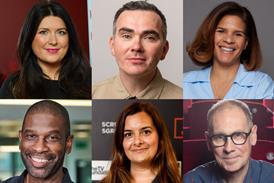






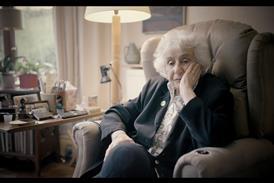




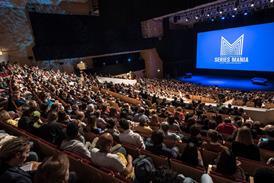

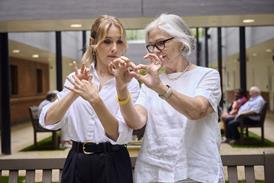




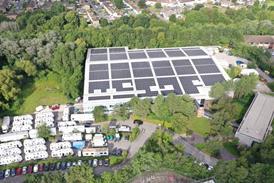












No comments yet